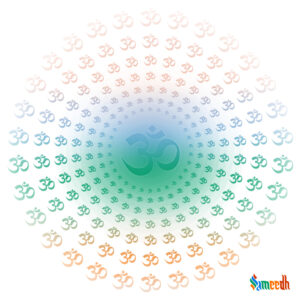The Agamas are a genre of scriptures in Hinduism that primarily focus on ritual worship, temple construction, and spiritual practices. These texts provide guidelines for various aspects of religious ceremonies, including rituals, mantras, and temple architecture.

The Agamas are considered authoritative in the Shaiva, Shakta, and Vaishnava traditions, among others. Unlike the Vedas, which are considered Shruti (revealed knowledge), the Agamas are classified as Smriti (remembered or tradition).
Key features of the Agamas:
- Rituals and Worship: The Agamas prescribe detailed rituals and procedures for worship, including puja (ritual worship), meditation, and other spiritual practices. They provide guidelines for the worship of deities in various forms and aspects.
- Mantras and Tantras: The Agamas contain sacred mantras (chants) and tantras (ritual techniques) that are used in religious ceremonies. These mantras are considered powerful and are believed to invoke divine energies.
- Temple Construction and Iconography: A significant portion of the Agamas is dedicated to the construction of temples and the installation of idols. They provide detailed instructions on the architectural design of temples, placement of deities, and the consecration process known as Prana Pratishtha.
- Yantras and Mandalas: The Agamas describe the use of yantras (sacred diagrams) and mandalas (geometric patterns) in worship and meditation. These visual representations are considered aids in focusing the mind and invoking spiritual energies.
- Classification: The Agamas are often classified based on the deity they focus on. For example, Shaiva Agamas are dedicated to Lord Shiv, Shakta Agamas to the Divine Mother (Shakti), and Vaishnava Agamas to Lord Vishnu.
- Transmission: Traditionally, the Agamas are said to have been passed down through a guru-disciple tradition rather than being written texts. Over time, many Agamas have been recorded in written form, and different sects may follow slightly different sets of Agamas.
- Popular Agamas:
- Shaiva Agamas: Include texts like Kamika Agama, Karana Agama, and others, which guide the worship of Lord Shiva.
- Shakta Agamas: Include texts like Kularnava Tantra, Rudra Yamala Tantra, and others, focusing on the worship of the Divine Mother.
- Vaishnava Agamas: Include Pancharatra Agamas, which provide guidelines for the worship of Lord Vishnu.
The Agamas play a crucial role in shaping the religious practices and temple traditions of various Hindu sects. They emphasize the importance of precise rituals, devotion, and spiritual discipline in the pursuit of moksh (liberation) and divine connection.
